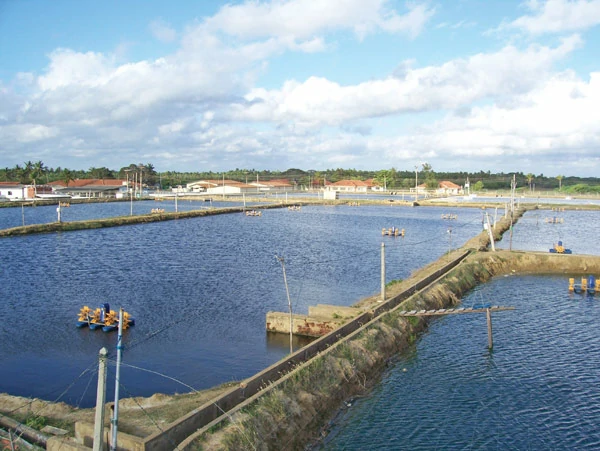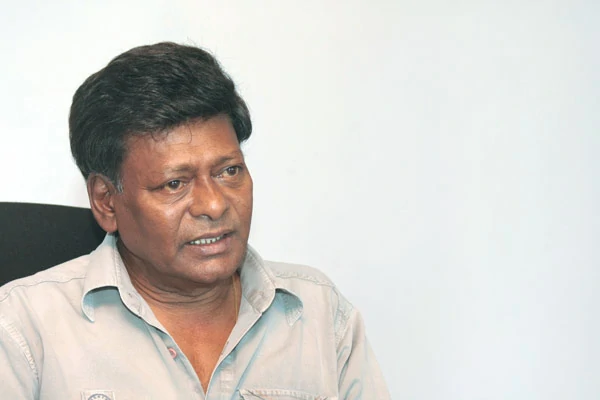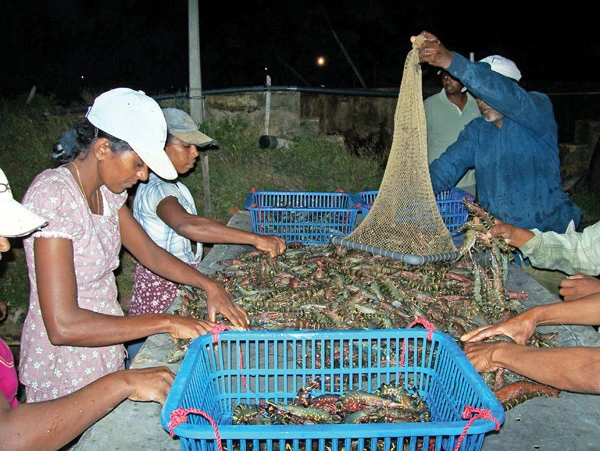
The aquaculture industry in Sri Lanka has the potential to attain new levels of success, productivity and profitability. In 2006, Lanka German Aquaculture, began its venture in Sri Lanka amidst many challenges, opening feasible avenues towards attaining these objectives. Gerard Nathaniel, Managing Director, of Lanka German Aquaculture explained to Business Today that with adequate knowledge, technology and streamlining, sustainable aquaculture in
Sri Lanka is an achievable goal.
How did you venture into the prawn farming business?
I left Sri Lanka in 1966, to pursue my education in the UK. After I became a Chartered Mechanical Engineer, I settled in Germany and worked there as an Engineer until 1995. After my marriage, I came back to Sri Lanka, but my home is still in Germany.
I was made to understand that, some of my dear friends were very active in Brazil, trying to help the Brazilian farmers to counter the virus and bacterial diseases, they encountered in Brazil, through German technology. Since, we in Sri Lanka also have been affected very badly by the “White Spot Syndrome” (WSS), which was destroying this industry, I asked them to visit Sri Lanka and analyse our problems. Usually in Brazil, the flight from one farm to another takes about two hours. I explained that, in Sri Lanka everything is located within the same area. Therefore, I invited them to Sri Lanka and introduced them to the BOI (Board of Investment). We met with the Fisheries Minister and also the relevant people at NAQDA (National Aquaculture Development Authority).
I was able to introduce my friends from Germany to all the relevant people and they were inspired. My friends’ next question was about the political situation in the country and I assured them that President Mahinda Rajapksa will find a solution to the then ongoing civil war and the war will definitely end.
At that time, we were in a shrimp farm in Thoduwawa. Since they had a method to prevent virus diseases in prawns we first did a direct test in that farm. The test was very successful. The area was flood prone and we had all together 12 ponds. During the rains the 12 ponds became one pond and it was fully covered with water. As you know, prawns need a certain amount of salinity for its growth. We found that, though the salinity was zero the prawns were about 32g – 35g and they looked very healthy. These prawns were really different from the other prawns. For about ten days, the ponds were under floodwater, but the prawns were still healthy. After this experience I was very convinced that prawn farming would be successful in Sri Lanka with our new technology.
Since I was very happy with the system, I ventured into the prawn farming industry. We bought the present property, which is 78 acres in Bangadeniya, seven kilometers north of Chilaw. We have 48 ponds and each pond is one acre. We had a good team and we commenced our culture cycle with the German “BEGLUSYS” biotechnology, comprised of Beglusan and Beglulite.
President Mahinda Rajapaksa is encouraging investors to come here and I wish to thank the Defence establishment for assisting us. I too now have the confidence to ask investors to come and continue the development work in prawn farming. For me, the biggest problem was not the virus disease, but the thuggery, indiscipline and intimidation, which have now been all completely solved.
The present shrimp farm has been growing very rapidly. I would say that it’s an exponential growth. But there are few obstacles such as obtaining adequate amount of good quality water. The farmers in the area use the common water from the adjoining lagoon or estuary (the Dutch Canal), which has been polluted. This pollution problem needs to be addressed. The other challenge is the availability of good quality feed for the prawns and fish.
The Present Shrimp Farm Has Been Growing Very Rapidly. I Would Say That It’s An Exponential Growth. But There Are Few Obstacles Such As Obtaining Adequate Amount Of Good Quality Water.
How did you overcome these challenges?
We have a system to deal with the White Spot Syndrome. The virus can survive only in a host carrier, such as bacteria and other micro-organisms in the water and crabs and the disease is transmitted by them. With our system it is possible to clear the bacteria of a one-acre pond, once in three hours. The machine we have has been specially made in Germany with reactors and it’s a marvelous thing. Within three hours it is possible to destroy all the bacteria in the pond and therefore the White Spot Syndrome has no chance of surviving. NatureNova came up with this solution. We prepared a chemical generator called mixed oxidants generator and named it Beglulite. It is prepared here in the farm itself, using only salt, water and power.
The water from the lagoon is treated with our Beglulite. The purpose of treating the water is that, there is a high load of bacteria and viruses in the reservoir water and if you send this water into the grow-out tanks without treatment, then there’s a chance that the disease will arise within 15-20 days and there is a chance of losing all the money that has been invested. We make sure that we prepare adequate amounts of good water by treating it with Beglulite.
As for good quality feed, if we buy from various suppliers we would not know the ingredients that they are using and how good it is. Therefore, we always try to maintain a lower FCR – Food Conversion Ratio. We do not want to feed two kilos and get one kilo of weight. Normally 1:1.2 is the conversion ratio. That means 1.2 kilograms of feed are used to produce one kilo of prawns. To ensure good quality we need to have proper tests.
The other most important ingredient is a feed additive known as Begulsan. We add three kilos of (Begulsan) feed additive to one ton of feed during the process of manufacture and that enhances the immunity of the prawn to a very high degree. We have tested these prawns after harvest and we have seen the response in Europe; we have compared it with the Vietnamese prawns and Indonesian prawns.
Most of the chefs at the restaurants can identify our prawns from the taste as it is different. The muscle structure is different; when you fry or bake it, there is little moisture loss.
Sri Lanka Is An Ideal Place To Start A Prawn Farm. The Potential Is There But It Is Not Utilised At All… We Have To Have A Processing Plant, Which Can Give The Farmers A More Economical Way Of Packing And Sending The Prawns Abroad.
The Government should look into these issues. There has to be a crop calendar for example, to discipline the errant shrimp farmer and to teach them how to conduct farming in the proper way. The biggest set back for all prawn farmers is created when the prawns get diseases with the farmers emptying the water into the lagoon containing bacteria and viruses. This prevents other farmers from using that water, the only water they have. This has to be stopped. We have to have a very strong regulations to prevent shrimp farmers releasing contaminated water into the lagoon and notices have to be put up to discipline and educate them. These are small things that can make a world of difference.
There is a lack of strength – the Fisheries Department should be given more powers to handle these problems. They are also short staffed. These things have to change. Minister Felix Perera did a very good job, he himself came here, saw what we were doing. I must say he did his job. He made sure that his presence was felt here.
What improvements can be made here?
The feed availability here is a monopoly. Agents are bringing in feed from Taiwan, Indonesia and other countries. They make large amounts of money and the poor famers have no choice but to pay high prices for imported feed. We need to set up a feed mill in Sri Lanka. Then we can provide some subsidy to the farmers. There needs to be a feasibility study carried out in this business. You do not spend ten rupees to earn ten rupees. Then there is no profit. Everything is money oriented. Therefore a study needs to be done to see why the feed component and the electricity component are so high. If you say you need Rs 500 to produce one kilo of prawns and the market price is Rs 300, then there is no use. Therefore, one needs to study along with the experts and see where the Government or foreign countries can assist us to reduce the cost of producing the prawns.
Sri Lanka is an ideal place to start a prawn farm. The potential is there but it is not utilised at all. There are many small prawn farmers. The access of the lagoon to sea-water can be increased by widening the sea mouths of the lagoon. Then, there will be an exchange of water and the stagnation of water and bacteria in certain places in the lagoon will be less. The continuous clean up of the Dutch Canal is also very important.
One has to study, what is bio-security, what are the parameters, the minimum standards required and this has to be done by some authority. They have to come and inspect the farm, and then bio-security clearance can be given when minimum requirements have been fulfilled. This is very important; otherwise somebody can reintroduce the viral disease again. We have to stop this. There is no point in even treating water with Beglulite, if it is contaminated by infected shrimp.
There are monitoring bodies for example NAQDA, they have a policing setup, but they are also very understaffed and face many obstacles.
Furthermore, what have we done for sustainable aquaculture and to be eco-friendly? We treat the water before it enters into our ponds, and after the prawns have been harvested, treatment is carried out, using an eco-friendly system. This is not only for our company but it is a way of informing society. Somebody has to take the responsibility to regulate the farmers’ activities.
Also, this is a big farm, but even if we had a market in Europe for our shrimps, which are chemical free, we can’t supply them regularly. However, if we have other farmers using these methods as well, there would be a continuous supply. As I said, we have to have a processing plant, which can give these farmers a more economical way of packing things and sending it to Europe or America. These are the things that are very important and to make it profitable.
What is the market for your products?
We send most of our harvest to Germany and are pursuing upmarket clients because our prawns have no chemicals and no antibiotics. The European market is very interested in having organic prawns grown with green technology.
Therefore, we want to bring prawn farming in Sri Lanka to a level where everybody will look for our prawns. We are now venturing into the up market segment in Germany. They can test our prawns and see that there is no residue of chemicals. That’s the greatest thing that we have achieved. This is what we are going to do in Southeast Asia as well.
To what extent have you started in other countries?
We have in collaboration with our principals NatureNova GmbH, have opened a branch office in Kuala Lumpur, Malaysia to promote aquaculture in the Southeast Asian region. The Malaysian Government is funding and making significant efforts to improve their aquaculture industry. They are excited in using our Halal compliant Beglusan feed and environmentally friendly green technology in private and state managed farms.
We are currently in negotiations with multiple interested parties in Malaysia.
We have also received serious inquiries from East Malaysia, Indonesia, Thailand, the Philippines, India and Vietnam.
Do you cater only to the international market?
It depends actually. Now if it rains during the second cycle, the growth rate is less and you cannot keep feeding the prawns for a long time. Therefore we are forced to harvest at a certain time for instance, when we are breaking even and making a profit by selling to the local market. The BOI says export, but even for export, there is a certain size. Sometimes the prices after the recession in Japan and other countries is much lower than the local market. In Japan, they do not go for the shrimps because of the price. That is not a big problem because the recession is almost over.Lanka German will concentrate on excellent quality and chemical free prawns and we wish to service markets like Switzerland and Germany. Once we have established ourselves we will think of how we can get more investors to come and service others, as there are many abandoned shrimp farms that people have given up because of all these problems, especially intimidation. Now I need to emphasise that this problem has been taken care of and it is safe and people can invest. We have no more problems in this area.
We want to secure the chemical free – organic market, which will be very good for Sri Lanka.
What are the opportunities for investors here?
Sri Lanka offers a wonderful opportunity for prawn farming using green biotechnology. I have traveled all over the world and I must say that Sri Lanka is one of the best places to live in. If people are free to do their business with the support of the Government and certain areas are looked into properly, this would be an ideal country. President Mahinda Rajapaksa has a great chance to rebuild this country.
In short, our biotechnology products are green and eco-friendly, and they have been scientifically proven to increase aquaculture harvest yields. Our aquaculture harvests, combined with our German Beglusys biotechnology, have produced prawns that are physically healthier, larger, stronger and disease-resistant.







